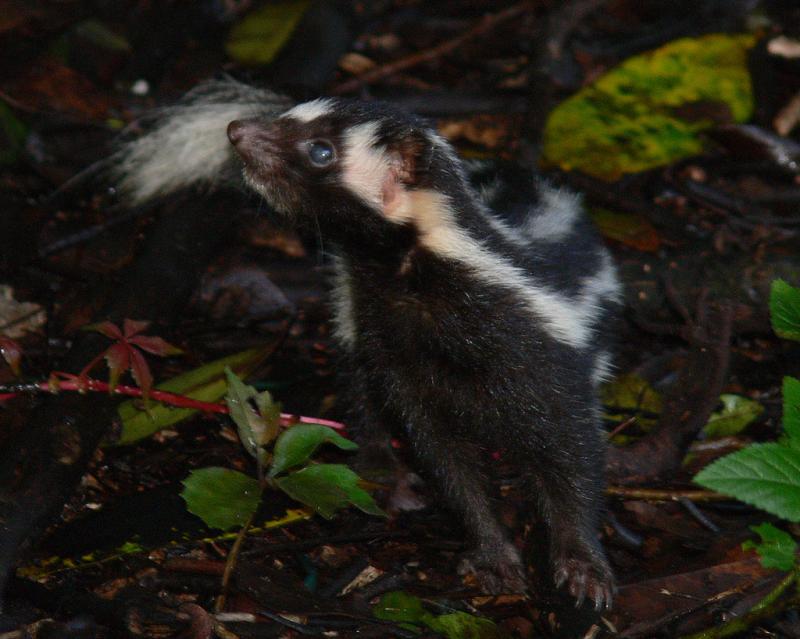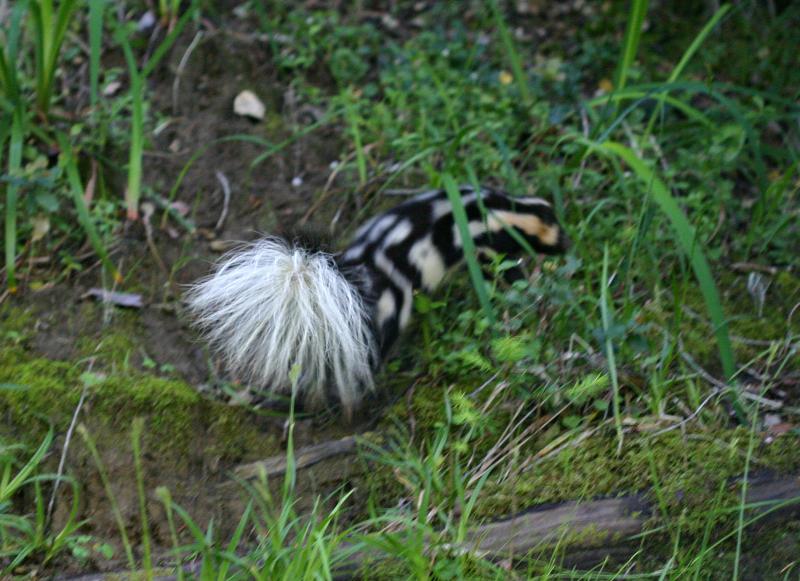Wildlife North America . com North American Animals - mamals, birds, reptiles, insects |
Eastern Spotted Skunk (Spilogale putorius)
Eastern Spotted Skunk Photograph by Nora Arias Loftis. Some rights reserved. (view image details) 
This Spotted Skunk has just been released after being trapped. Photograph by Andrea Arbogast. Some rights reserved. (view image details)
EASTERN SPOTTED SKUNK FACTS
DescriptionThe Eastern Spotted Skunk has short legs with small tapered head, and short, rounded nose. It has a white spot on the forehead and one in front of each ear. There are six white stripes on the front part of the body. The back part of the body has two broken white bands, also one spot on each side of the rump and two at the base of the tail. Skunks can spray a foul-smelling fluid from two glands near the base of its tail. This liquid is oily and difficult to remove and is very painful if sprayed in the eyes. Other Names Civet-cat, Little Spotted Skunk, Little Pole-cat, Four-striped Cat Size Head and body length: 20-cm - 34cm. Tail length: 10cm - 22cm. Males are slightly larger than females. Environment wooded areas, prairies, rocky habitats. It lives in a hole it digs for itself, or in abandoned burrows dug by other animals. Food Insects, small mammals such as mice, cottontails. In summer they eat insects, fruits, birds, eggs. In fall they eat mostly insects Breeding Five or six kittens are born after a gestation period of 50-65 days. The mother has three pairs of teats for feeding young. At birth they are very immature and blind, deaf. Range from Minnesota in the north to Tamaulipas, Mexico in the south, and west to eastern Wyoming and Colorado. Found through midwestern states, in the Appalachian mountains as far north as Pennsylvania, throughout Florida, and to eastern Texas. Classification
Relatives in same Genus Western Spotted Skunk (S. gracilis) Home | Mammals | Reptiles | Birds | Insects | Privacy Policy | Disclaimer | Contact Us |